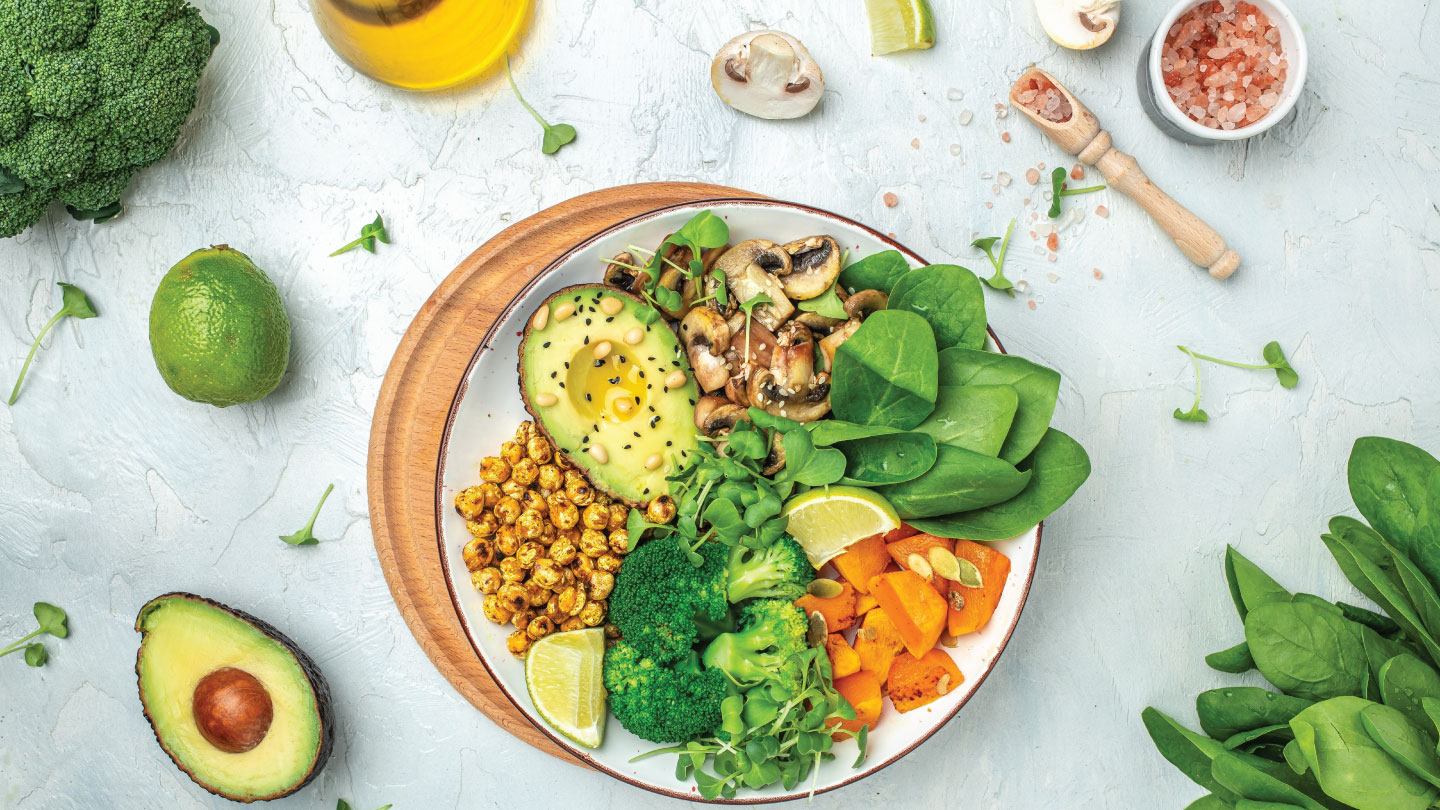Nutrition
This or That: Is Green Juice Healthier Than a Protein Smoothie?
Health enthusiasts may agree on many nutrition topics, but there’s one that's still up for debate: What should be your go-to fitness beverage, protein smoothie or green juice? Let’s find out.
.jpg)
Picture this: You’re one week into the new year and you’ve finally made up your mind on adopting a healthier lifestyle. You start by religiously working out every day and making a vow to go cold turkey on that junk food addiction. What comes next? Replacing your old eating habits with new ones. This is where you find yourself in a pickle. Should you start your day with a protein-packed smoothie or perhaps a refreshing glass of green juice is better for you? Confused on which blend contains the highest concentration of nutrients? Allow us to clear things up for you.
Let’s start with the basics. What exactly is green juice? Well, in layman’s terms, it is the liquid extracted from (usually) green fruits and vegetables that contains all the good plant stuff like nutrients and enzymes. Some people might be wary of juices because they usually eliminate insoluble fibre. However, most juices already contain some amount of “soluble” fibre, despite being devoid of fleshy plant material. The key is to choose fruits and vegetables that contain a good amount of that gut-friendly soluble fibre. Kale, apple, spinach, pineapple, carrots—all are excellent sources of the soluble fibre we’re talking about.
Research also suggests that juices not only retain most nutrients found in fruits and vegetables but also successfully transport them to our bodies. A study by Dr Julia K Kolodziejczyk, San Diego State University, California, USA, found that beta-carotene, a beneficial nutrient, obtained from juiced produce rather than whole food forms, resulted in higher blood levels of beta-carotene. In other words, the juice was more readily absorbed by the subject’s body. The research also stated that soluble fiber reduces beta-carotene absorption by 30 to 50 per cent.
Related Story: The Truth About Diets: Juice Detox
Now moving on to our second contender of the day, a protein smoothie is a beverage usually prepared by blending fruit, vegetable, and a certain liquid into a puree. The liquid can be yoghurt, milk, buttermilk, or simply water—and if it’s water, the protein content is usually achieved with the addition of protein powder. Think of a protein smoothie like a nutritious salad that you have to drink. Smoothies contain plant pulp which means that they also contain the insoluble fibre that juices usually get rid of. Now this is both a pro and a con. On one hand, it aids digestion in people that are already blessed with a strong gut. But if you have a weaker digestive system, your body might have to work extra hard to extract these precious nutrients. And in the process, it sometimes loses more energy than it gains.
However, insoluble fibre has shown to contain more antioxidants than its soluble counterpart. According to a 2012 study by Dr Ram M Uckoo, Vegetable and Fruit Improvement Center, Department of Horticultural Sciences, Texas University, USA, blended grapefruit contains a significantly higher concentration of phytochemicals and antioxidants because these compounds are found in the fibrous membranes of the fruit—as compared to grapefruit juice which doesn’t include those elements.
Related Story: Indian Berry Smoothie Bowl
| Protein Smoothie | Green Juice |
|---|---|
| 1. Acts like a well-rounded meal due to its thick consistency and high protein content | 1. Can’t be consumed as a complete meal due to the lack of enough protein |
| 2. Contains more calcium | 2. Contains more Vitamin C, alpha-carotene, beta-carotene and potassium |
| 3. Nutrients in a smoothie may be depleted due to the over-processing of the ingredients. | 3. Retains most nutrients and provides 83 per cent of the required daily intake of several vitamins |
| 4. Can be stored for later consumption | 4. Best if consumed on the spot |
| 5. Nutrient absorption requires more energy | 5. Easier absorption of nutrients |
| 6. Fruits and vegetables retain all their fibre for healthy digestion | 6. Doesn’t contain insoluble fibre |
| 7. Usually contains dairy. Vegan alternatives are harder to find. | 7 .Contains no dairy. Perfect for people that are vegan |
| 8. It’s easy to get carried away and consume more calories in the form of a protein smoothie: ideal for people that want to gain weight | 8. Contains significantly less amount of calories: ideal for people that want to lose weight. |
Related Story: This or That: Is HIIT The Cardio Workout For You or LISS?
The verdict
After closely comparing the pros and cons of these highly sought-after healthy beverages, we’ve come to the conclusion that there is no right way of consuming fruits and vegetables. It all comes down to your needs and requirements. If you can afford to sit down and eat a complete breakfast in the morning, then go ahead, pair it with a fresh glass of green juice. But if you’re usually on the run and have a habit of skipping breakfast, a protein-rich smoothie might be your best friend. But don’t just rely on artificial protein powder as it can be high in sugar. Instead, try adding ground flax seeds, chia seeds and almonds for that extra dose of protein and Omega-3.
When it comes to green juice vs protein smoothies, the debate should be turned away from “Which of the two is better?” into “What do I need right now?” Everyone is different, including our lifestyles and dietary habits. You might need a smoothie post workout but a glass of juice for that extra dose of macro and micro nutrients. And that’s perfectly okay.
Related Story: Are You Eating More Protein Than You Actually Need?
EXPLORE MORE
From fibre and protein to gut health and mindful meals, these are the healthy eating lessons that stood out in 2025!
Bloating isn’t just about overeating or bad food choices. According to expert nutritionist Dr Lakshmi Kilaru, it’s often the result of multiple factors. Keep reading to know more.
If you’re on a GLP-1, your diet can make or break your health journey. Here’s your guide to avoid common pitfalls.
Bright, tangy, and naturally refreshing, this orange chutney offers a burst of citrusy sweetness with a gentle hint of spice. It’s the perfect accompaniment to elevate daily meals with freshness and depth.







.jpg)

.jpg)
